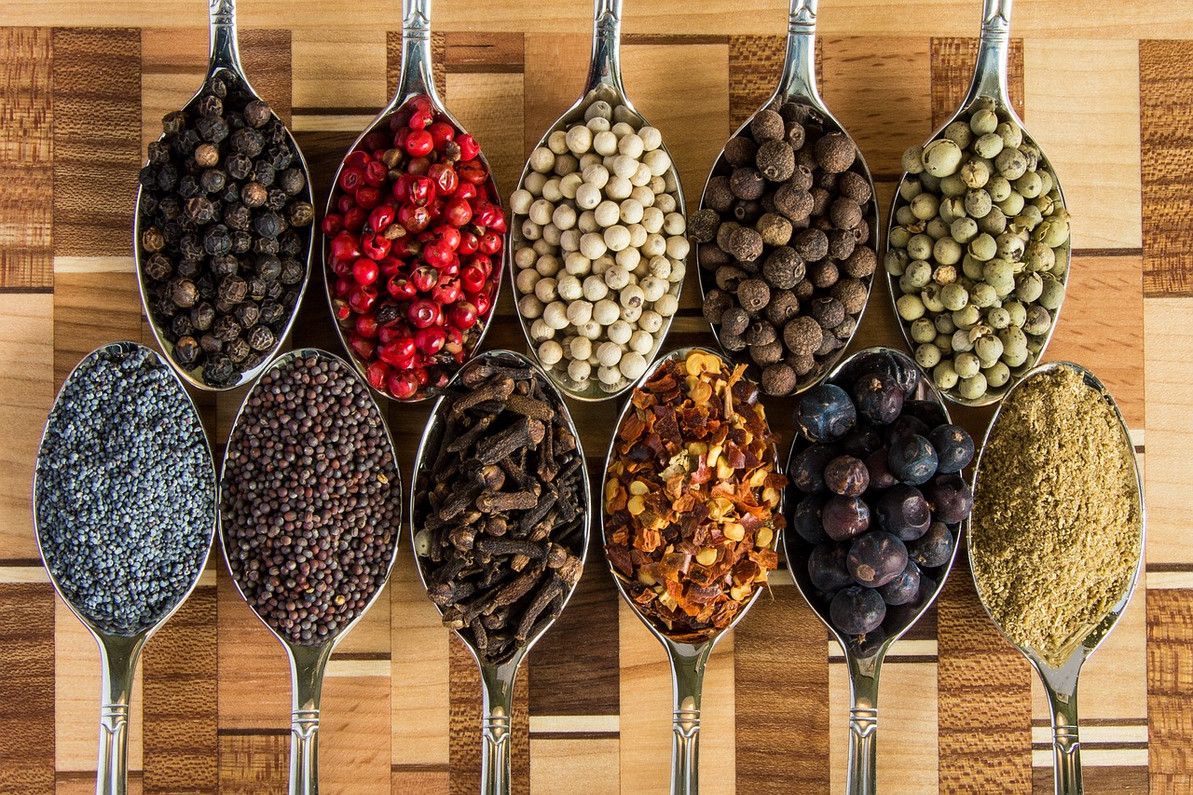Unlocking the Power of Culinary Seeds: Uses and Benefits of Celery, Fenugreek, Nigella, Caraway, Fennel, Aniseed, and Black Pepper
Culinary seeds are a remarkable addition to any kitchen, offering distinct flavours, aromas, and cultural significance across global cuisines. Beyond their taste, they come packed with benefits that enhance everything from seasoning dishes to supporting diverse cooking techniques. Let’s explore some popular culinary seeds—Celery, Fenugreek, Nigella, Caraway, Fennel, Aniseed, and Black Pepper—and dive into their rich uses and unique benefits.
1. Celery Seed
- Flavour Profile: Earthy, slightly bitter, and mildly peppery.
- Uses: Celery seeds are often ground into powders or added whole to spice mixes. They’re perfect for pickling, seasoning meats, or flavouring soups and stews. Commonly found in salad dressings, such as coleslaw or potato salads, celery seeds add a distinct, savoury depth.
- Benefits: Known for their rich mineral content, celery seeds can enhance the natural flavours in broths, especially when combined with other hearty spices.
2. Fenugreek Seed
- Flavour Profile: Bitter and slightly sweet, often likened to maple syrup.
- Uses: Fenugreek is a key ingredient in many South Asian and Middle Eastern dishes. Ground fenugreek seeds are frequently used in spice blends like garam masala and curry powders. They add a caramelised flavour to curries, stews, and marinades and work wonderfully in vegetarian recipes, pairing well with legumes and vegetables.
- Benefits: Fenugreek seeds bring a unique complexity to dishes, adding both flavour and a boost of fibre and essential vitamins to meals.
3. Nigella Seed (Black Cumin or Kalonji)
- Flavour Profile: Smoky, slightly peppery, with a hint of onion-like sharpness.
- Uses: Nigella seeds are popular in Indian and Middle Eastern cuisines, used in breads like naan or sprinkled over flatbreads. They’re also a classic ingredient in spice blends like panch phoron in Bengali cuisine and can be added to pickles or salads for a peppery kick.
- Benefits: With their bold flavour, Nigella seeds are perfect for adding an extra layer of richness to savoury dishes without overpowering other ingredients.
4. Caraway Seed
- Flavour Profile: Warm, sweet, with a hint of citrus and anise.
- Uses: Caraway seeds are popular in European dishes, especially in German and Eastern European cuisine. They’re often added to breads like rye, as well as in sauerkraut, sausages, and roasted meats. They work beautifully with root vegetables and are a must-try for adding depth to potatoes or cabbage dishes.
- Benefits: Known for their digestive properties, caraway seeds can add a warmth and complexity to dishes, balancing heavier flavours.
5. Fennel Seed
- Flavour Profile: Sweet and mildly licorice-like.
- Uses: Fennel seeds are versatile and used in both sweet and savoury recipes. In Indian cooking, fennel seeds are a common component of spice blends and often roasted and eaten as a mouth freshener after meals. They add a sweet aroma to breads, pastas, and baked goods and enhance the flavour of dishes with tomatoes or seafood.
- Benefits: Fennel’s natural sweetness can reduce the need for sugar in some dishes, and it brings a refreshing flavour to both sweet and savoury culinary creations.
6. Aniseed
- Flavour Profile: Strongly sweet with a licorice-like flavour.
- Uses: Aniseed is especially popular in Mediterranean and Middle Eastern dishes. It’s commonly used to flavour liqueurs like ouzo and sambuca and is an excellent addition to cookies, cakes, and other desserts. It can also be added to soups and stews for an aromatic sweetness.
- Benefits: Aniseed can enhance the flavour of both sweet and savoury recipes and offers a lovely balance to other strong spices in spice mixes.
7. Black Pepper
- Flavour Profile: Sharp, pungent, and mildly spicy.
- Uses: Black pepper is likely the most well-known culinary seed and is used as a seasoning worldwide. Freshly ground pepper is a staple in savoury recipes, used on everything from salads to steaks, soups, and sauces. It pairs well with other spices in rubs, marinades, and dressings.
- Benefits: Black pepper enhances the flavour of other spices and adds a distinct sharpness to foods, often rounding out the taste of complex dishes.
Creative Ways to Use Culinary Seeds
- Blending Spice Mixes: Combine these seeds to create spice blends tailored to your taste. For instance, mixing black pepper, nigella, and fennel seeds can create a unique rub for meats or vegetables.
- Infusing Oils: Try warming some of these seeds in olive oil to infuse the oil with flavours. This makes a delightful base for dressings or marinades.
- Herbal Teas: Seeds like fennel and aniseed can be steeped in hot water for a mildly sweet, comforting tea.
- Baking and Cooking: Add seeds like caraway or nigella to breads and pastries for an interesting twist.
Each culinary seed brings a unique taste profile and adaptability to numerous recipes, making them indispensable in kitchens around the world. Whether you’re cooking up a classic recipe or experimenting with new flavours, adding these seeds will deepen your culinary experience and bring out rich, authentic flavours.
Recent Posts
-
Christmas Recipe Ideas with My Herb Clinic: Festive Drinks, Baking Classics & Savoury Creations
Christmas in Australia arrives with warm breezes, longer evenings, and that familiar mix of nostalgi …2nd Dec 2025 -
The Life of a Dough-Girl: Natural Powders for Show-Stopping Tea, Baking & Sourdough Decoration
Opening night for your pantry. From quick-change colours to encore-worthy flavour, these herb and fr …16th Oct 2025 -
Breathe Easy This Spring: Natural Tips & Tricks for Hayfever Season ?
Spring in Australia brings blossoming gardens, warmer weather, and for many, the return of the dread …8th Oct 2025




